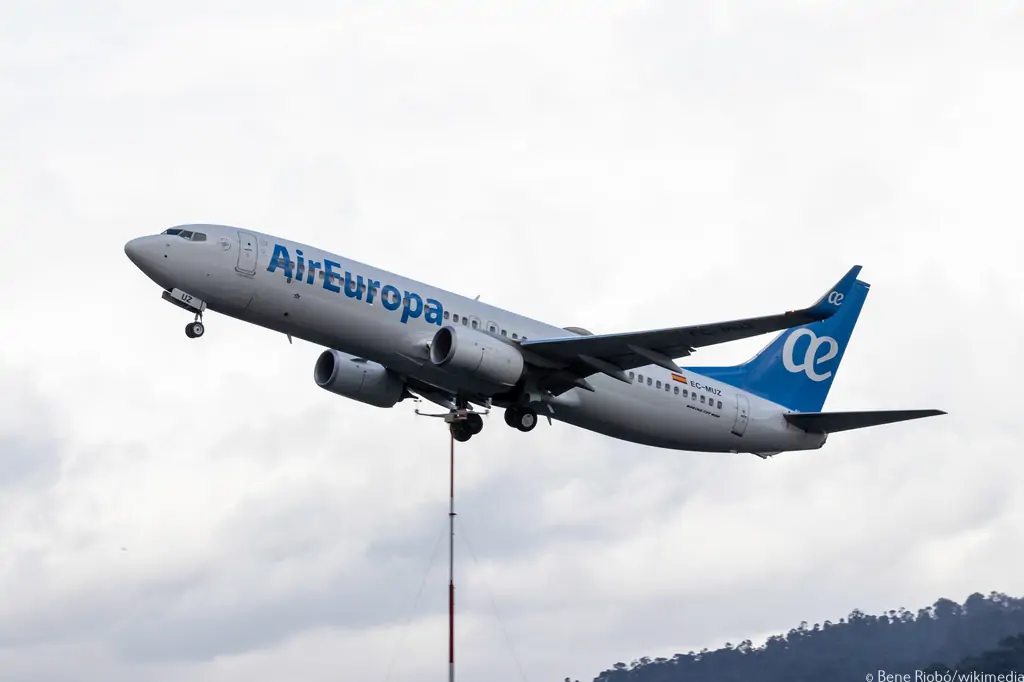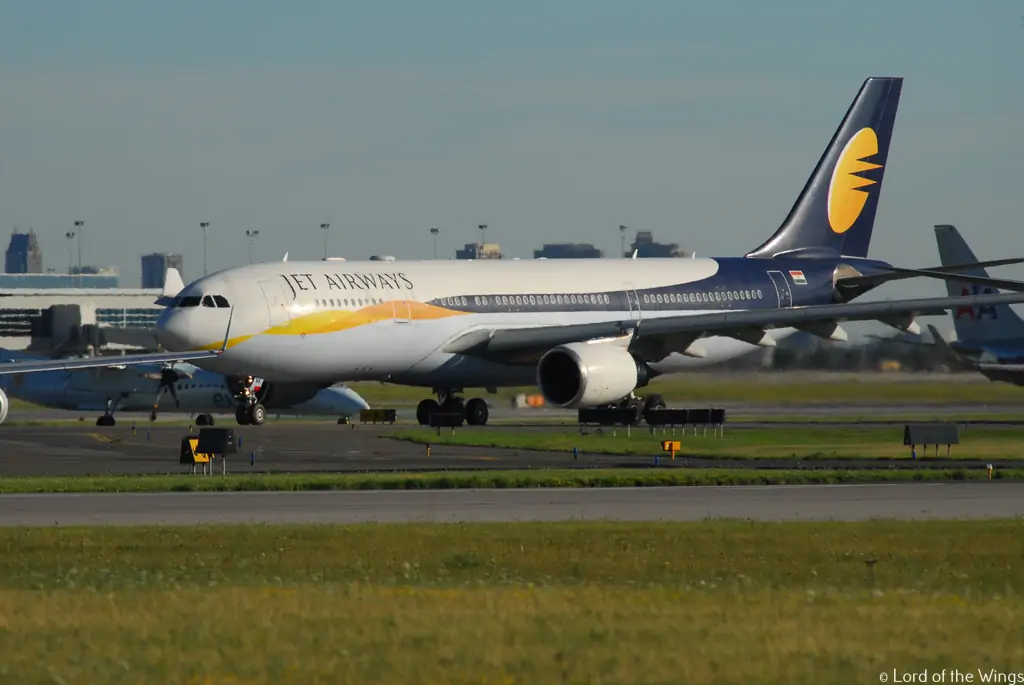In recent news, Air Europa, a prominent airline, finds itself grappling with a series of pilot strikes that have disrupted the airline's operations. With eight further pilot strikes set between May 22nd and June 2nd, the airline has been forced to cancel 114 flights. These strikes were initiated by the Sindacato de Pilotos de Espana (SEPLA) union, which was further responsible for a four-day walkout earlier this month that resulted in the cancellation of 68 flights.
Background Information about Air Europa
Air Europa was founded in 1986 and has steadily expanded its fleet and flying itineraries throughout the years. With a concentration on both local and international routes, the airline has become a popular alternative for both domestic and international travellers in and out of Spain. Air Europa's dedication to safety, comfort, and efficiency has led to the airline's success.
The SEPLA Union and its Function
The Sindacato de Pilotos de Espana (SEPLA) union represents a significant percentage of Air Europa pilots. SEPLA, as a representative organization, seeks to safeguard its members' rights and interests by ensuring fair treatment and favorable workplace conditions. SEPLA negotiates with Air Europa management on employment contracts, salary, working hours, and other labor-related issues through collective bargaining.
Current Scenario
Air Europa, a subsidiary of the Globalia Group, has served as a major airline in Spain for several decades. The airline has a reputation for reliability and customer satisfaction owing to its extensive flight network and excellent customer service. Recent pilot strikes, however, have put a strain on its operations, posing issues for both the company and its passengers.
Because peak summer travel is about to commence, the Ministry of Transport has established minimum service requirements at this juncture. Domestic flights servicing the Spanish cities of Madrid, Bilbao, Palma de Mallorca, Malaga, Vigo, and Barcelona, on the other hand, will be impacted.
The Financial Ramifications
The cancellation of numerous flights due to strikes places Air Europa in financial compromise. Not only does the airline lose revenue from ticket sales, but it also incurs additional costs in terms of paying impacted customers, resolving consumer complaints, and establishing contingency plans. These financial responsibilities pose a serious threat to the company's overall profitability.
Customer Dissatisfaction
Flight cancellations due to pilot strikes frequently cause irritation and discomfort for passengers. Passengers' travel plans are disturbed, resulting in missed connections, rescheduling issues, and significant financial losses. This poor experience may lead to a decrease in consumer loyalty and satisfaction, thereby impacting Air Europa's reputation in the long run.
Reputational Damage
Repeated pilot strikes and accompanying flight cancellations have harmed Air Europa's reputation. Passengers may see the airline as untrustworthy or disorganized, resulting in a loss of faith in the brand. Rebuilding the damaged reputation will require major efforts on the part of Air Europa to demonstrate increased dependability and successfully address consumer complaints.
Potential Solutions
Finding common ground and agreeing on the pilots' requests is critical to resolving the disagreement. Air Europa management must carefully analyze the pilots' complaints and propose potential solutions that address these concerns while balancing the company's operational and financial restrictions. Moving ahead will require open communication, honesty, and compromise.
Long-term Ramifications
The long-term impact of the pilot strikes on Air Europa's reputation and financial health is unknown. It might have an impact on the airline's expansion objectives, collaborations with other airlines, and passenger trust. To recover from this difficult moment, Air Europa must win the trust of both its staff and customers via better communication, improved working conditions, and great service.
Conclusion
Air Europa's prolonged pilot strikes have interrupted travel arrangements and caused issues for both the airline and its customers. SEPLA's demands for better working conditions, job security, and fair treatment prompted these strikes, resulting in financial losses for Air Europa and passenger displeasure. Finding a solution that meets the needs of both the pilots and the airline's management is critical to restoring stability and rebuilding the airline's image. To ensure a sustainable future during this difficult time, Air Europa must prioritize open communication, negotiation, and compromise.
With Inputs from Aviacion Line, Aviation24
Read next
Airports Authority of India (AAI) is back in the black, raking in a profit of INR 3,400 crore in the fiscal year that ended March as surging domestic air traffic boosted its financial performance, according to a source. AAI has reported a profit for the first time after the coronavirus pandemic that had significantly impacted air traffic and the aviation sector as a whole.
In the financial years -- 2021-22 and 2020-21 -- AAI reported a loss. While the loss was INR 803.72 crore in the fiscal year ending March 2022, the same stood at INR 3,176.12 crore in the financial year ending March 2021. These figures excluded exceptional and extraordinary items and taxes.
AAI has recorded a profit of INR 3,400 crore for the 2022-23 financial year. This is a provisional figure; the final figure will be known after the audit of the financial results. The source also said the good performance was mainly due to the high growth in domestic air traffic.
The surge in Air Traffic
In 2022, domestic air passenger traffic surged 47.05% to 12.32 crore compared to 8.38 crore in the year-ago period. Further, the passenger numbers soared 51.70% to 3.75 crore in the first three months of this year as against 2.47 crore in the same period a year ago, as per official data. In 2021-22, AAI had a meagre profit of INR 8.76 crore, including exceptional items and tax. This surge in domestic air travel has undeniably played a pivotal role in AAI's financial renaissance.
Meanwhile, in the fiscal ended in March 2022, the government waived the compulsory dividend payment requirement. AAI had requested the waiver instead of waiving Air India's which was done before the government’s sale of the loss-making carrier to the Tata Group in January 2022. This decision further eased the financial burden on AAI and allowed the authority to focus on its recovery and growth initiatives.
About Airports Authority of India
The Airports Authority of India, or AAI, is a Statutory body under the ownership of the Ministry of Civil Aviation, Government of India. It is responsible for creating, upgrading, maintaining, and managing civil aviation infrastructure in India. It provides Communication Navigation Surveillance/Air Traffic Management (CNS/ATM) services over the Indian airspace and adjoining oceanic areas. AAI currently manages a total of 137 airports, including 34 international airports, 10 Customs Airports, 81 domestic airports, and 23 Civil enclaves at Defence airfields. AAI also has ground installations at all airports and 25 other locations to ensure the safety of aircraft operations.
AAI covers all major air routes over the Indian landmass via 29 Radar installations at 11 locations along with 700 VOR/DVOR installations co-located with Distance Measuring Equipment (DME). 52 runways are provided with Instrument landing system (ILS) installations with Night Landing Facilities at most of these airports and an Automatic Message Switching System at 15 Airports. It also provides Air Traffic Management Services (ATMS) over the entire Indian airspace and adjoining oceanic areas.
AAI is also implementing the GAGAN project in technological collaboration with the Indian Space Research Organization (ISRO). The navigation signals thus received from the GPS will be augmented to achieve the navigational requirement of aircraft. The first phase of the technology demonstration system was completed in February 2008.
Read next
Air travel has revolutionized the way we explore the world, but it has additionally brought about concerns pertaining to the environment owing to carbon emissions. Fokker, a Dutch aircraft manufacturer, is stepping up to the challenge of mitigating climate change while advocating sustainability in the aviation sector. With the goal of flying over 2,500 kilometers (1,550 miles) without emitting any carbon emissions, Fokker hopes to usher in a new era of 'Green Flying' with its next-generation aircraft.
Present Situation
The manufacturer aspires to develop an adaptable and versatile next-generation aircraft that will operate on a mix of sustainable aviation fuel (SAF) and kerosene, as well as eco-friendly designs, sustainable manufacturing, natural light, and reduced noise pollution. Rooftop panels will be installed in an improved cabin, providing a novel approach to minimizing the likelihood of jet lag and enhancing passenger comfort. The current design aims to differentiate Fokker from its competitors by giving it a futuristic appearance.
Fokker's Green Flying Vision
Innovations in Sustainable Aviation
The aviation sector is undergoing a paradigm shift towards sustainability, with a renewed emphasis on lowering carbon emissions. Fokker recognizes the need for change and envisions an ecologically responsible future for aviation transport. Fokker is committed to paving the way for developing carbon-efficient aircraft with low ecological impact by utilizing technological developments and innovative solutions.
The Need for Carbon-Efficient Aircraft
The need to lower carbon emissions across all industries has been underscored by the urgency of addressing climate change. Because the aviation industry contributes significantly to greenhouse gas emissions, it must take proactive actions to reduce its environmental impact. Fokker's goal of developing a next-generation aircraft with zero carbon emissions demonstrates its commitment to establishing a more sustainable aviation sector.
Development of Next-Generation Aircraft
Design that is Adaptable and Versatile
The next-generation Fokker aircraft will be adaptive and versatile, catering to a wide range of flying requirements. This aircraft seeks to provide efficient yet environmentally sustainable travel solutions for short-haul regional excursions as well as long-haul intercontinental journeys. Fokker seeks to enhance fuel economy and minimize carbon emissions by optimizing its aerodynamics, weight distribution, and propulsion systems.
Sustainable Aviation Fuel (SAF) and Kerosene Blend
The use of sustainable aviation fuel (SAF) in conjunction with kerosene is a crucial component of Fokker's green flying efforts. When compared to standard jet fuels, SAF is obtained from renewable sources such as plant-based feedstocks and waste materials, resulting in much lower carbon emissions. Fokker's next-generation aircraft will run on a blend of SAF and kerosene, minimizing its carbon footprint while contributing to a more sustainable aviation industry.
Eco-Friendly Design Elements
The dedication to sustainability at Fokker extends to the design of their next-generation aircraft. The aircraft would include eco-friendly characteristics such as lightweight materials, sophisticated composite structures, and efficient engine systems. These design characteristics not only enhance fuel efficiency but also lower the total ecological impact of aircraft manufacturing and operation.
Practices for Sustainable Manufacturing
Fokker intends to use sustainable manufacturing practices for its next-generation aircraft, in addition to eco-friendly designs. This includes reducing waste, optimizing the consumption of energy, and incorporating recycling and circular economy concepts throughout the production process. Fokker seeks to create new benchmarks for environmentally conscious aircraft production by embracing sustainable practices.
Fokker's Next-Generation Aircraft's Environmental Impact
Carbon Emission Reductions
Fokker's next-generation aircraft will considerably contribute to the reduction of greenhouse gas emissions in the aviation sector by emitting no carbon during flight. This ground-breaking technology complements worldwide efforts to battle climate change and transition to a more sustainable future. Fokker's aircraft's carbon emission reductions will be critical in lessening the environmental effect of air travel.
Climate Change Mitigation
Climate change is a major worldwide concern, and the aviation sector has responsibility for reducing its contribution to it. Fokker's next-generation aircraft offers a positive step forward, providing a credible alternative to reducing carbon emissions in air travel. Fokker is pushing positive change and establishing an example for other aircraft manufacturers to follow by pioneering green flying.
The Future of Green Aviation
Fokker's ambitious project to create a next-generation aircraft that emits no carbon emissions is a big step forward in the goal of sustainable aviation. As more manufacturers adopt environmentally friendly technology and practices, the future of green flying appears bright. Fokker is positioned to revolutionize the aviation sector and lead the path for a cleaner future by prioritizing environmental sustainability without sacrificing performance or passenger satisfaction.
Conclusion
Fokker's commitment to developing a next-generation aircraft that emits no carbon emissions demonstrates its dedication to sustainability. Fokker is leading the way towards green flying with a combination of revolutionary design, renewable aviation fuel, eco-friendly features, and decreased noise pollution. Fokker's next-generation aircraft demonstrates the possibility of a more sustainable aviation industry by addressing the environmental effects of air travel. Looking ahead, it is critical that additional manufacturers join this trend, working together to cut carbon emissions and build a greener, more ecologically conscious aviation sector.
With Inputs from Fokker Next Gen
Read next
In the modern era of technology, staying connected when travelling has become an imperative rather than a luxury. Recognizing this, Emirates has recently made substantial improvements to its in-flight connectivity, ensuring that all passengers, regardless of class of travel, may now enjoy the benefit of complimentary connectivity provided they sign up for Emirates Skywards. This improvement has been well embraced, with an additional 30,000 Economy Class passengers connecting to complimentary onboard Wi-Fi on a weekly basis.
Overview of Emirates' Enhanced In-Flight Connectivity
Emirates has long been at the forefront of offering passengers a seamless travel experience. The airline has taken another step towards ensuring passengers can stay connected even at 40,000 feet by recently improving its in-flight connectivity. This enhancement includes an array of connectivity options, allowing travellers to access the internet, converse with loved ones, work, or simply occupy themselves throughout their journey.
Present Situation
Emirates has consistently been at the forefront of in-flight Wi-Fi improvements, having invested more than $300 million in onboard connectivity to date. All Emirates Skywards members in every category of travel can now take advantage of some type of complimentary connection. Skywards members, whether Blue, Silver, Gold, or Platinum tier, travelling in any class, Economy, Premium Economy, Business, or First Class, can enjoy free app messaging. Additionally, First Class passengers who are Skywards members are entitled to unrestricted internet access for free, allowing them to buy or work online while in flight, as are Silver, Gold, and Platinum Skywards members travelling in Business Class. Platinum Skywards members enjoy complimentary internet access in all classes.
Benefits of the Enhancement
Free Connectivity for All Emirates Passengers
One of the most noticeable benefits of this upgrade is that it provides free connectivity to all Emirates passengers. If you become a member of Emirates Skywards, you can now enjoy complimentary onboard Wi-Fi, whether you are flying in Economy, Business, or First Class. This is a big shift in the business since formerly complimentary Wi-Fi was sometimes restricted to specific classes or frequent flyer programmes.
Increased Access for Economy Class Passengers
The improvement has helped Economy Class passengers in particular, who now have more access to complimentary onboard Wi-Fi. Previously, these travelers had few alternatives for remaining connected, which might be irritating on long-haul trips. However, with this new advancement, Emirates has closed the gap and given all passengers an equal opportunity to experience the convenience of in-flight connectivity.
How to Join Emirates Skywards
Signing up with Emirates Skywards is a quick and easy procedure. Passengers may establish their Skywards account by visiting the Emirates website or using the mobile app. They will get access to a variety of services, including complimentary onboard Wi-Fi, after they have enrolled. Emirates Skywards also provides extra benefits, such as the ability to earn and redeem miles for flights, upgrades, and other prizes, making it a desirable loyalty programme for regular travellers.
Available Connectivity Types
Complimentary Onboard Wi-Fi
Emirates' enhancement includes complimentary onboard Wi-Fi for every passenger. This means that once you have signed up for Emirates Skywards, you'll have unlimited internet access throughout your journey at no extra cost. Whether you need to check your emails, browse the web, or remain connected on social media, in-flight Wi-Fi keeps you connected and lets you make the most of your time aboard.
Additional Paid Connectivity Options
In addition to the complimentary onboard Wi-Fi, Emirates provides paid connectivity alternatives to passengers who require more bandwidth or have more stringent connectivity requirements. Individuals who rely extensively on internet connectivity for work or who demand quicker bandwidth for streaming high-definition material would benefit from these solutions. Emirates ensures that all passengers may adapt their in-flight experience to their particular needs by offering both complimentary and premium connection options.
Conclusion
Emirates' newest enhancement to its in-flight connection marks an important milestone in the aviation sector. Emirates has proven its commitment to offering an extraordinary travel experience by providing free Wi-Fi to all passengers and increasing access for Economy Class travellers. This innovation enables passengers to stay connected, productive, and entertained during their flight, providing a more gratifying and delightful travel experience.
With Inputs from Emirates
Read next
China Southern Airlines, one of China's leading airlines, has just begun construction on a new base in Shenzhen. Shenzhen, located in Guangdong's southern province, borders the Special Administrative Region of Hong Kong, making it a perfect site for the airline's development goals. A ceremony was conducted on Friday, May 19th, 2023, to celebrate the start of construction, signaling a key milestone for both China Southern Airlines and the city of Shenzhen.
China Southern Airlines' History
China Southern Airlines is a prominent airline in the People's Republic of China. In terms of passenger counts and fleet size, it is the country's largest airline. The airline, headquartered in Guangzhou, has a considerable presence in both local and foreign markets. Its enormous network connects China to the rest of the globe via a diverse network of destinations.
Shenzhen: An Ideal Location
Shenzhen, a vibrant and ever-growing metropolis, provides China Southern Airlines with significant benefits. Because both cities are well connected by multiple kinds of transportation, including high-speed trains, ferries, and bridges, their closeness to Hong Kong provides abundant chances for further transportation. Shenzhen's status as a significant economic and technical centre in Southern China adds to its allure as a suitable home base for the airline.
Commencement of Construction
The start of the construction process on China Southern Airlines' new base in Shenzhen is a significant step forward in the airline's development goals. The celebration on May 19th, 2023, convened essential stakeholders and officials to commemorate this historic occasion. The building project is planned to last five years, demonstrating the airline's dedication to long-term growth and development.
Timeline and Investment for the Project
China Southern Airlines has made a significant investment in its new Shenzhen base. The airline is investing 2.4 billion yuan ($341 million) to construct a sophisticated and effective facility to fulfil the needs of its expanding operations. The project has a five-year timeframe, with phased construction and development to ensure a seamless transition and minimal disruption to the airline's operations.
Benefits of the New Base
China Southern Airlines is going to benefit from the development of a new base in Shenzhen in an array of aspects. For starters, it enables the airline to increase its operating capabilities and capacity to meet the region's expanding demand for air travel. The new base will serve as a solid basis for the airline to improve services and optimize operations, resulting in increased efficiency and customer satisfaction.
Increased Operational Capabilities
China Southern Airlines has the potential to significantly extend its operating capabilities with the establishment of a new base in Shenzhen. With additional capacity and resources, the airline can provide more flight options, frequencies, and destinations. This expansion improves connectivity for customers by allowing them to easily reach a broader selection of domestic and international destinations via the airline's substantial network.
Prospects for the Future and Growth Opportunities
The development of China Southern Airlines' new base in Shenzhen lays the groundwork for future chances and potential. The airline is well-positioned to meet rising demand for air travel thanks to increased operating capacity and greater connections. Shenzhen's strategic position allows the airline to enter expanding markets and explore new routes, supporting sustained expansion and prosperity.
Conclusion
The commencement of the construction process on China Southern Airlines' new base in Shenzhen marks an important milestone for both the carrier and the city. The significant investment and long-term ambition of the project demonstrate the airline's commitment to delivering great services and growing its operations. China Southern Airlines hopes that the new base will improve connectivity, increase economic growth, and give travelers seamless travel experiences throughout Southern China and beyond.
Read next
Uncertainty continues over the revival of grounded Jet Airways as the validity of the airline's air operator's certificate expired on Friday, May 19. There was no word from the Jalan Kalrock Consortium (JKC), which emerged as the winning bidder for the carrier under the insolvency resolution proceedings, on the airline’s flying permit status. The airline’s Air Operator’s Certificate (AOC), which has not flown since April 18, 2019, was revalidated on May 20 last year for a one-year period and the validity ended on Friday, May 19.
However, it could not be immediately ascertained whether the consortium has sought any relaxation from the aviation regulator DGCA with respect to the AOC, which is the most crucial requirement for operating an airline. A query sent to Ankit Jalan, a board member of the JKC, on whether the consortium has sought renewal of the AOC remained unanswered. The ownership transfer of Jet Airways to the JKC is yet to happen amid continuing differences with the lenders of the airline.
Jet Airways' Revival Plan
Debt-ridden Jet Airways, which flew for 25 years, shuttered operations on April 18, 2019. The insolvency resolution process of the carrier began in June 2019 and the National Company Law Tribunal (NCLT) approved a resolution plan submitted by the JKC in June 2021. Last week, the Consortium reportedly approached the NCLT asking it to grant more time to pay the creditors and implement the revival plan.
In January, the NCLT approved the transfer of Jet Airways’ ownership to JKC, stating that the conditions had been met. The tribunal set November 16, 2022, as the effective date for the resolution plan. Lenders of Jet Airways had approached the NCLAT, opposing the transfer of ownership to the consortium. They alleged that JKC had not fulfilled its obligations and argued against the ownership transfer.
Jet Airways was grounded in April 2019 due to substantial losses and approximately ?8,000 crore in debt. In October 2020, the airline’s Committee of Creditors approved the revival plan submitted by the Jalan-Kalrock consortium.
Furthermore, JKC's inability to fulfil certain AOC renewal criteria poses additional challenges. One of the major shortcomings is the consortium's lack of aircraft, a vital component for operating an airline. The absence of necessary pilots and cabin crew on the consortium's rolls further disqualifies JKC from eligibility for AOC renewal. Sources indicate that the two Boeing 737 aircraft that were leased by JKC have been reclaimed by the lessors, exacerbating the challenges faced by the consortium.
JKC missed the May 15 deadline to pay the first tranche to Jet Airways' creditors. Consequently, the consortium sought more time from the National Company Law Tribunal (NCLT) to fulfil its financial obligations. It is important to note that JKC does not yet have ownership of Jet Airways, further clouding the future prospects of the airline, and renewing this license won't be easy as the airline will have to convince the DGCA about its ability to fly which in Jet's case may not be possible as yet.
Sources also say that the Jet 2.0 team is almost deserted with no senior executive left in the airline after CEO-designate Sanjiv Kapoor quit last month. It has been nearly two years since the NCLT approved the resolution plan of Jalan-Kalrock but the airline is still far from taking off and hopes to see it in the skies again are only fading.
Airline in Loss
Meanwhile, a six-month time limit to make good on payment of INR 1.85 billion (USD22.4 million) to creditors also expired on May 14. There is no word from either camp that any payment was made. In January, the Mumbai bench of the National Company Law Tribunal (NCLT) ordered the payment within the defined timeframe. In exchange, the creditors would be required to issue the release certificate. In early May, Jet Airways filed another petition with the NCLT against creditors the State Bank of India, the Punjab National Bank, JC Flowers Asset Reconstruction (which acquired so-called "bad assets" from Jet Airways before its collapse), and Ashish Chhawchharia, the independent resolution professional on the Jet Airways management committee. A hearing is scheduled on June 6.
Separately, this week Jet Airways also reported a loss of INR 540 million for the quarter and year ended March 31, 2023, while its revenues for the quarter were INR124 million. The airline had reported a loss of INR 233.63 crore in the year-ago period. The company's revenue from operations for Q4FY23 rose by 12.5% to INR 12.4 crore as against INR 11 crore in Q4FY22. EBITDA stands negative at INR 18.76 crore in March 2023 up 90.17% from INR 190.76 crore in March 2022.
Jet Airways shares closed at 57.50 on May 17, 2023 (NSE) and have given -26.09% returns over the last 6 months and -45.00% over the last 12 months.








Comment